day 3: Visiting Wilhelmshaven and Wadden Sea
(Wednesday, 4th of May 2022)
The third day of our meeting - time to see something of the host town and region.
We met at the dyke. This was also the place where the hostel is situated which had become the home for all guest students and teachers for five days.
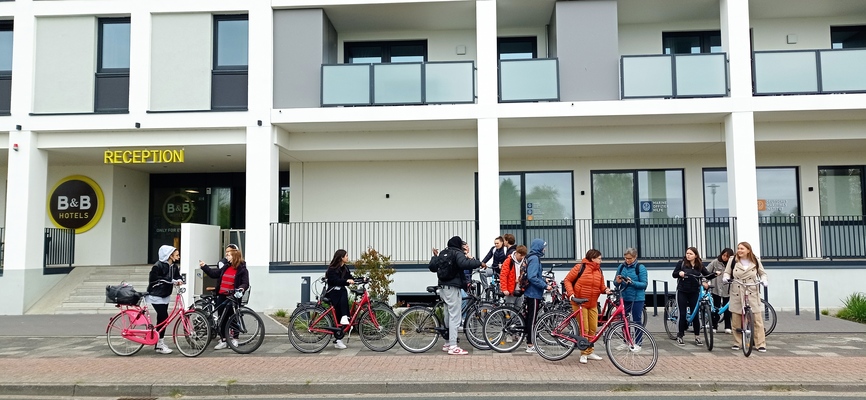
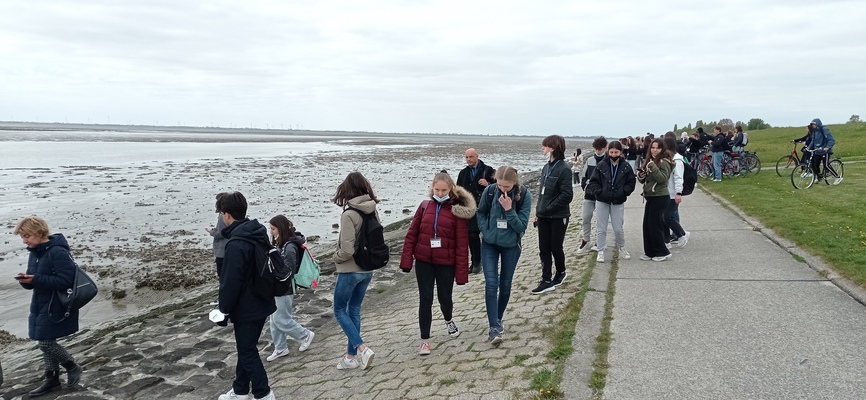
As we were quite a big group all together - over 60 persons all together, students and teachers, visiting and hosting - we spent the day in two smaller groups: one of them (the Italian, Croatian, Greek and half of the German team) directly in the town of Wilhelmshaven, near the beach and the museums, the other one (the French, Slovenian and half of the German team) going by bike around the "Jadebusen" (the bay next to Wilhelmshaven).
The "bike team" made a first stopp after 8km in a small village called "Cäciliengroden". The place was built in the 1930ies for dockworkers and their families; small houses and row houses with small gardens. A "Salzwiesenlehrpfad" (educational trail with information about flora and fauna of the salt meadows, a characteristic nature of this area) leads through the salt meadows. It was low tide this morning and we could walk quite a long way into the salt meadows. It was on this small educational trail in the middle of nature that the French group by chance met Mr Hartmut Wiesner, a local artist, who did not only know a lot about nature of this region, but also explained in fluent French to the guests.

Another 8 kilometres and we arrived at Dangast, a village at the Jade bay, directly opposite to Wilhelmshaven. It used to be a village of art, a bit like Pont-Aven in France. At the beginning of the 20th century, a group of young artists - students who called themselves "Die Brücke" (the bridge) - used to meet and work at Dangast, some of them, like Erich Heckel and Karl Schmitd-Rottluff, becoming famous paintors of expressionism. Although they came only for a few summers, they left the mark of art on the place. You can see a lot of art all over the village and also at the shore.
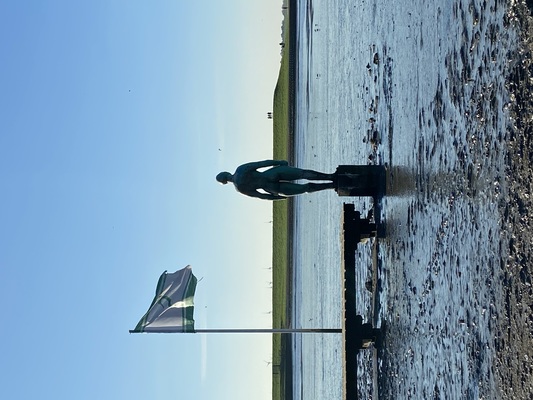
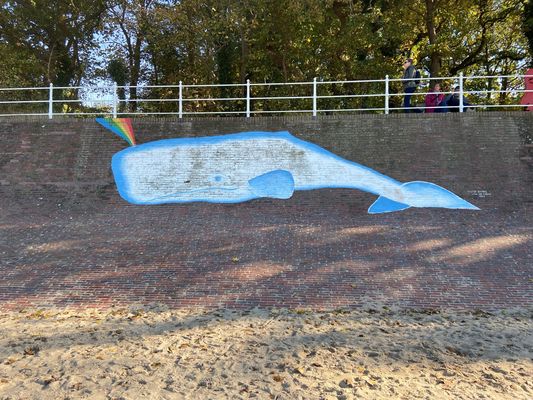
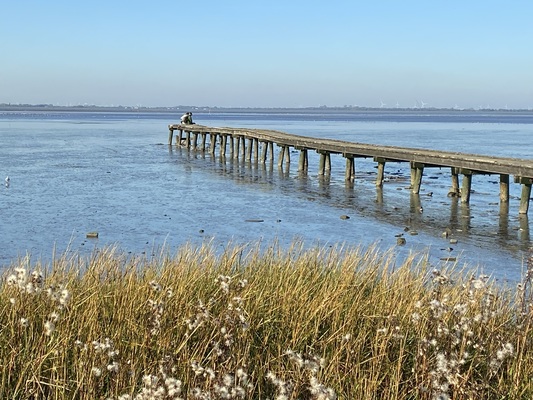

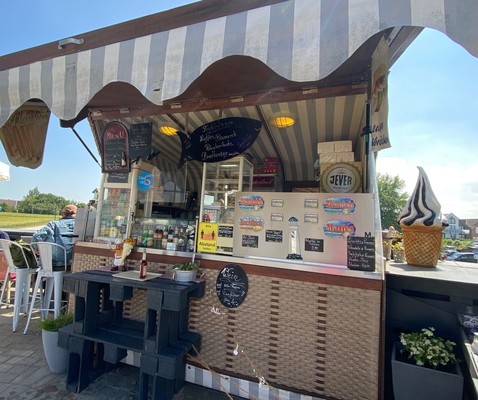

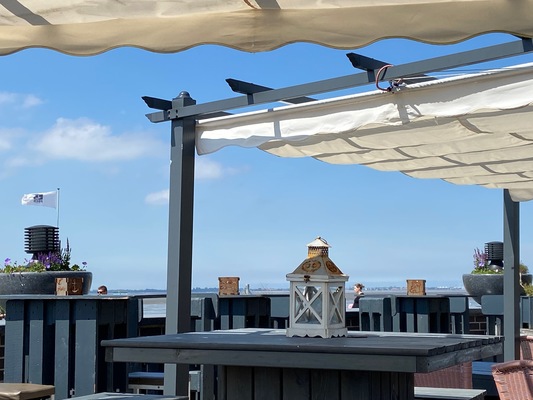
We stayed there for some hours, looked around, had lunch together at some of the small restaurants, played cards and ball. Then it was time to ride our bikes back to town. Meanwhile, the clouds from the morning had disappeared and the sun had come out.
This was the "Dangast crew". And what did the "Wilhelmshaven team" experience during this time?
The Croatian, Greek, Italian teams and their German partners walked along the sea side until they arrived at the "Kaiser-Wilhelm-Brücke" (emperor-William-bridge), the characteristic sign of the town.

Very near the bridge is the "Wattenmeer Besucherzentrum" (Waddensea visitor centre) situated. It is about the nature at the North German sea coast and the habitat "Wadden Sea" which had become UNESCO world nature heritage in 2009. The museum had been under renovation and new conception under the last months. In fact, it was still closed as the day of re-opening had to be postponed due to technical delay. Nevertheless the administration had made an exeption and we were the very first ones who were allowed to see the completely renovated exhibitions about whales, sea birds and other waddensea inhabitants.

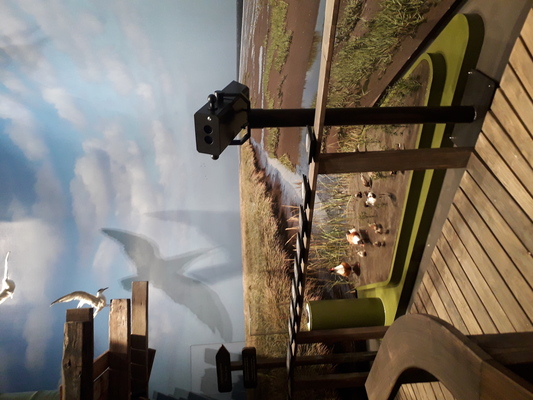
There were a lot on information at interactive stations. You could play educational games together or experience size, sound and abilities of different kind of whales which was very impressive. You could also enter a "Salzwiesenlehrpfad" (salt meadow educational trail) like the one the other group visited on theit way to Dangast. You could also be on a sandbank full of seals.
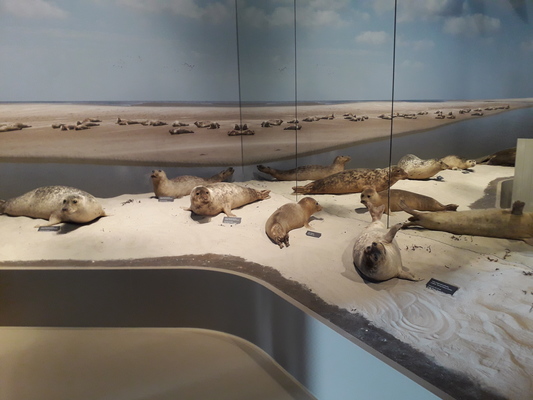
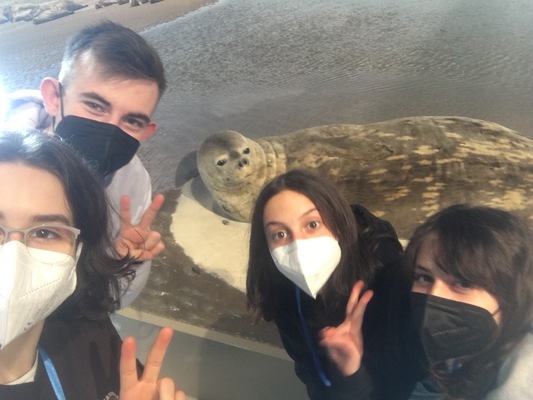
our group playing a quiz about migratoy birds; the game is similar to "Eins - zwei - drei - Chance vorbei", a popular TV quiz, known by many children in Germany
Part of the exhibition showed the extense of sea pollution which was pretty shocking.
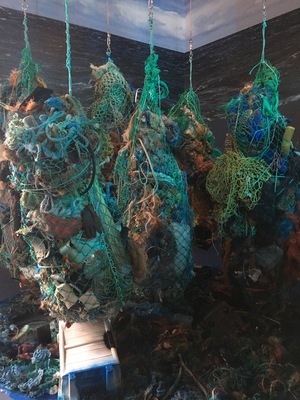 The plastic waste that we could see on the upper floor (you can see it on our picture) was the finding of just one week and only at a very, very limited space - near the island Memmert which is an uninhabited small island at the East Frisian coast near Wilhelmshaven, a bird sanctuary. Imagine how enormous the pollution in our oceans as a whole must be!
The plastic waste that we could see on the upper floor (you can see it on our picture) was the finding of just one week and only at a very, very limited space - near the island Memmert which is an uninhabited small island at the East Frisian coast near Wilhelmshaven, a bird sanctuary. Imagine how enormous the pollution in our oceans as a whole must be!
We spent some time at the sea side and had some lunch. For most of the partners the air felt quite cold as everybody came from more Southerly regions. But at least the sun came out for some moments.

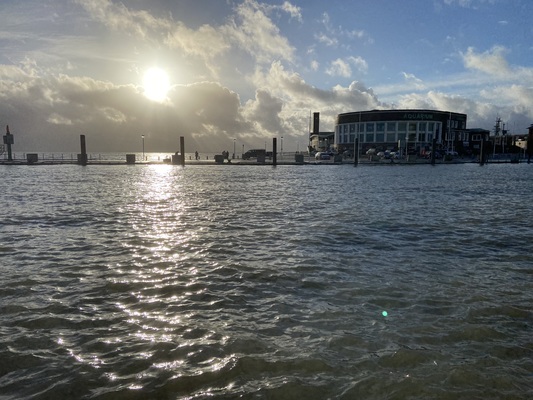
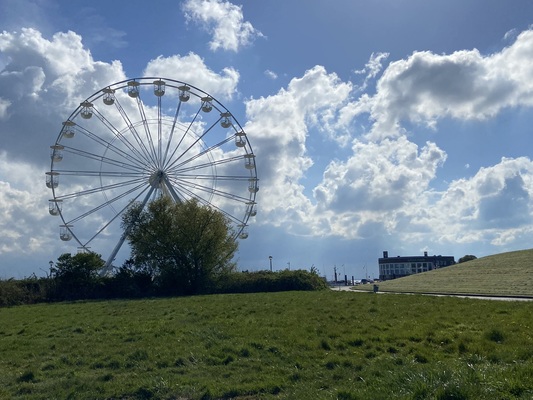

And then a museum of quite another kind was our new destiny: the "Marinemuseum" (navy museum). Inside, there was an exhibition about the origin of Wilhelmshaven as naval base in the middle of the 19th century and about the role and task of the navy nowadays. Outside, there were a lot of ships of the navy you could visit: frigates, a submarine and more. You could enter the bridge of a frigate and feel like a navy commander, you experience the feeling of being inside a submarine.
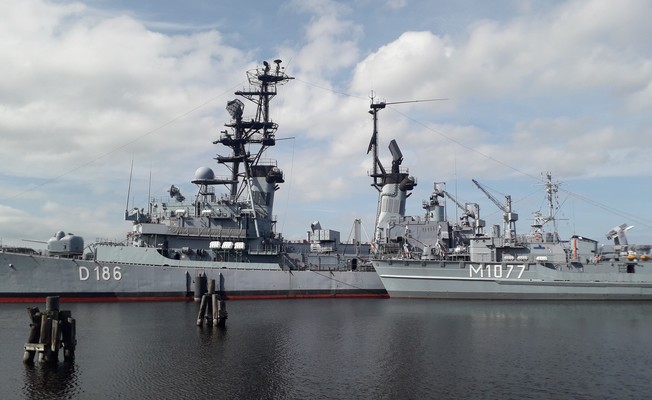
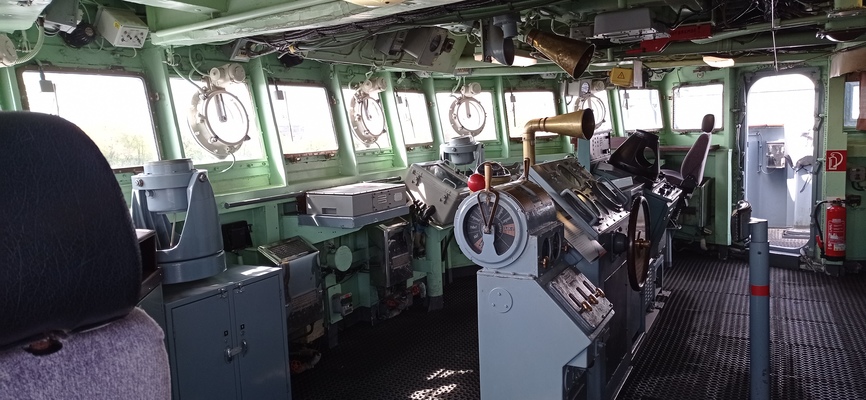
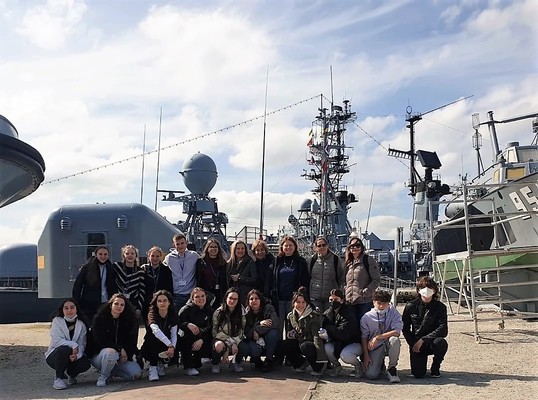
group picture at the navy museum
Click HERE to read more bout DAY 4 of our meeting